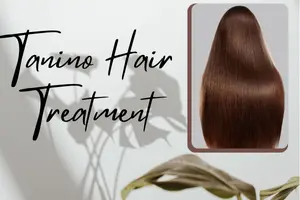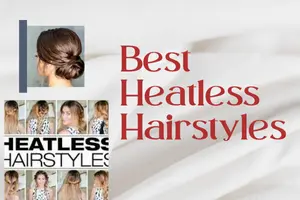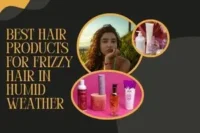Straightening Therapy-Your Complete Guide to Smooth, Straight Hair
Published: 20 Dec 2024
For numerous people across the globe, the dream of having smooth and straight hair is very much possible without heating appliances. Straightening therapy is widely practiced nowadays, as it provides beautiful hair without frizz or heat styling every day for an extended period. In this article, we’ll explain the process of straightening therapy, the available types of straightening therapy, along with their benefits and post-therapy care considerations.
What is Straightening Therapy?
Straightening therapy is a procedure intended for professional use that aims to straighten out hair and can last from several weeks to months. It does this by chemically altering the structure of curly or wavy hair strands on the molecular level to create a straight appearance. These treatments are usually offered in salons and clinics by qualified and licensed professionals who will adapt the therapy to the type of hair of the client and the desired outcome.
Types of Straightening Therapy
Explore the different types of straightening therapy to find the best method for achieving smooth, sleek hair tailored to your hair type and needs.

There are several types of straightening treatments available for people with different hair types, and one’s lifestyle must match one’s hair treatment.
1. Keratin Treatment (Brazilian Blowout) Suitable For:
Suitable for Those Seeking Frizz-Free, Smooth, and Manageable Hair with Long-Lasting Results.
Frizzy or Unmanageable Hair: How to Go About It:
The treatment relies upon the use of keratin, which is a naturally occurring protein for hair repair found in the hair and is designed to smooth and condition the hair. It is deposited around the hair cuticle and reduces the amount of frizziness that arises, making the hair appear smoother. This method is semi-permanent and will last approximately between 2 to 4 months.
Benefits
Increases the gloss and moisture of the hair while decreasing the frizz. In addition, the volume is retained even after the application, which makes it the best option for those seeking some taming but not an ultra-sleek finish
2. Japanese Hair Straightening (Thermal Reconditioning) Most Suitable For:
Most Suitable for Achieving Permanently Sleek, Pin-Straight Hair on Wavy or Curly Textures.
Curls, coarse hair. How It Works:
This hair straightening technique is permanent because it works on the fundamental structure of the hair by tearing bonds apart and then forming new strands that run straight. It is achieved through chemical treatment and subsequently heat processing.
Benefits:
Creates a perfect straight appearance with a maximum lifespan of up to 6-8 months. Touch-ups will be required once there is regrowth because the straightening is almost consistently permanent.
3. Chemical Relaxing Best For:
Very curly and extremely coiled hair. How It Works: A chemical solution that was introduced to the hair, hydrogen bonds weaken and straighten the hair, which now appears to have been relaxed. This procedure is permanent to the treated hair; however, the new strands that grow will still need to be routinely touched.
Benefits:
Drastically reducing the hassle involved in managing tightly curled or coiled hair. The final appearance of the hair is permanent on the treated strands, but as usual, maintenance of newly sprouted hair will be necessary every couple of months.
4. Hair Botox
A Deep Conditioning Treatment for Frizz-Free, Smooth, and Healthy Hair Without Harsh Chemicals.
Best for:
All hair types, especially damaged hair
How It Works
The strongest misconception is that hair botox, keratin, or chemical relaxers are the same. It is a deep-conditioning and smoothing treatment for hair, and it hydrates hair, making it easy to manage. Because there are no bond-breaking ingredients, it’s gentler on the hair. It’s not a softening or relaxing technique, but it does considerably eliminate frizz and leave hair smooth.
Benefits
Adds suitable volume, shine, and manageability for hair without the use of heavy chemicals. Results last around 2-4 months.
Benefits of Straightening Therapy
Straightening therapies have several advantages, especially for people who struggle with frizz or spend a lot of time doing their hair.
Here’s why it might be worth thinking about:
1. Long-lasting Results
The requirement for attention, straightening therapy is relatively low and can last anywhere between several weeks to many months, which is perfect for individuals with low hair maintenance requirements.
2. Reduced Frizz:
This holds for the vast majority of straightening treatments, and even in humid environments, straightened hair stays smooth and easy to manage.
3. Time Saving:
The time spent attempting and completing such a task is reduced since, on average, morning styling with straightened hair can be completed by simply brushing one’s hair.
4. Enhanced Shine:
Treatments such as keratin and hair botox finish with a glossy shine, which makes hair look arranged and shinier, therefore appearing healthier. For those curious about how it works, Hair Botox Explained reveals how this treatment deeply nourishes and smooths the hair without harsh chemicals.
5. Increased Manageability:
Reduced use of heating tools daily, but still achieving desirable results.
Post-Treatment Care for Patients with Hair Straightening
Any treatment or process produces a result, but to maintain the results and to keep your hair in good health after a straightening therapy, many precautions should be taken. To ensure the best results after straightening therapy, here are a few tips.
1. Use a Sulfate-Free Shampoo:
Sulfates are known to remove natural oils from the strands and shorten the life of the straightening process. Using a shampoo or a conditioner that contains sulfates will unnecessarily expose hair to potential damage.
2. Try not to wash for 48-72 hours:
Do not wash your hair a couple of days after a treatment. In this way, the treatment processes itself even further, making the result that much better.
3. Restrict the use of felt styling:
Heat creates stress on treated hair, so try and limit the use of flat irons and blow dryers. If heat is necessary, a heat protectant must be used.
4. Use a silk case for pillows:
Silk cases reduce the friction between the hair and the pillow. When hair is straightened, the silk pillowcase will keep it from kinking and breaking.
5. Avoid high-tension hairstyles:
After treatment, refrain from high buns, ponytails, or clips for a couple of days. Patients strip their hair of the troublesome dents or kinks caused by excessive stress.
6. Constant maintenance:
According to the type of treatment, maintenance may have to be undertaken once every few months, focusing on the areas of growth.
Is Straightening Therapy The Best Option?
In a lot of cases, people find straightening therapy to be very useful and convenient; however, it might not be appropriate for everyone.
A few things to keep in mind are listed below:
Hair Condition:
You may wish to consult a stylist before getting a straightening treatment if your hair is very lacking in health or strength. If not done correctly, some procedures can make the hair even more susceptible and weaker.
End Result:
You could start by asking whether they prefer the look created by keratin or Japanese straightening, which uses different amounts of heat on the hair and therefore creates straightened hairstyles at different levels.
Willingness to Perform Maintenance:
Achieving straightened hair may involve maintenance procedures to keep it looking its best, such as avoiding sulfates, reducing heat styling, and maintaining regular touch-up appointments.
Conclusion
Straightening therapy is ideal for achieving smooth, silky, and frizz-free hair, whether through keratin treatments or Japanese straightening. Consult a stylist, choose the right method for your hair type, and follow proper aftercare for stunning results.
FAQs
The duration of results depends on the type of treatment. Keratin and hair botox typically last around 2–4 months, while Japanese straightening can last 6–8 months or more. Even so-called “permanent” options aren’t truly permanent, since new hair growth at the roots needs retouching. With proper aftercare, you can extend the smooth and sleek look for much longer.
Some treatments are gentler, like keratin or hair botox, which nourish the hair while smoothing it. Others, like Japanese thermal reconditioning, can be harsh and may weaken thin, fragile, or over-processed strands. Damage risk increases if treatments are overdone or applied by someone inexperienced. A professional consultation is always the safest first step.
Yes, many straightening therapies are designed to be safe for dyed or bleached hair. However, some can cause color fading, especially near the roots where the chemicals are most concentrated. If your color is fresh, it’s better to wait at least a week before straightening. Always ask your stylist for a color-safe formula to protect vibrancy.
It’s best to wait between 48 and 72 hours before washing your hair. This gives the treatment time to fully set and seal into your hair cuticle. Washing too soon can weaken the results, leaving you with less sleekness and more frizz. Once the waiting period is over, use a sulfate-free shampoo for longevity.
Yes, oils can be very beneficial, but choose lightweight ones like argan or jojoba oil. Apply only to the ends to prevent dryness and split ends. Heavy oils on the scalp or full length can weigh hair down and shorten the treatment’s effects. Moderation is key to keeping hair shiny without buildup.
Brazilian keratin and hair botox are excellent options for taming frizz while maintaining natural movement. They smooth and condition the hair without leaving it stiff or poker-straight. For extremely curly hair, Japanese straightening may provide longer-lasting results, but it also changes the hair’s natural texture more drastically. Choosing depends on your style goals.
There are DIY straightening kits available, but they don’t deliver salon-quality results. At-home use can be risky since uneven application or excess heat can cause damage. Salon treatments are safer because professionals tailor the product strength and technique to your hair type. For long-lasting and healthier results, professional application is best.
The time varies by treatment and hair type. A keratin session usually takes 2–3 hours, while Japanese thermal straightening can last 3–5 hours or more for very long or thick hair. The process includes washing, applying the formula, blow-drying, and flat-ironing to seal the product. It’s a long process but delivers smooth, lasting results.
Yes, especially for those who want sleek, frizz-free, and manageable hair. It cuts down daily styling time and gives a polished, salon-fresh look every day. While it requires an investment of time and money, many find the convenience and confidence boost well worth it. Choosing the right treatment for your hair type is key.
For the first 2–3 days, it’s best to keep your hair down and avoid tight ponytails, clips, or braids. This prevents dents or creases that can set into your newly straightened hair. After the initial period, you can style freely without worry. Gentle handling in the early days ensures long-lasting smoothness.

- Be Respectful
- Stay Relevant
- Stay Positive
- True Feedback
- Encourage Discussion
- Avoid Spamming
- No Fake News
- Don't Copy-Paste
- No Personal Attacks

- Be Respectful
- Stay Relevant
- Stay Positive
- True Feedback
- Encourage Discussion
- Avoid Spamming
- No Fake News
- Don't Copy-Paste
- No Personal Attacks





